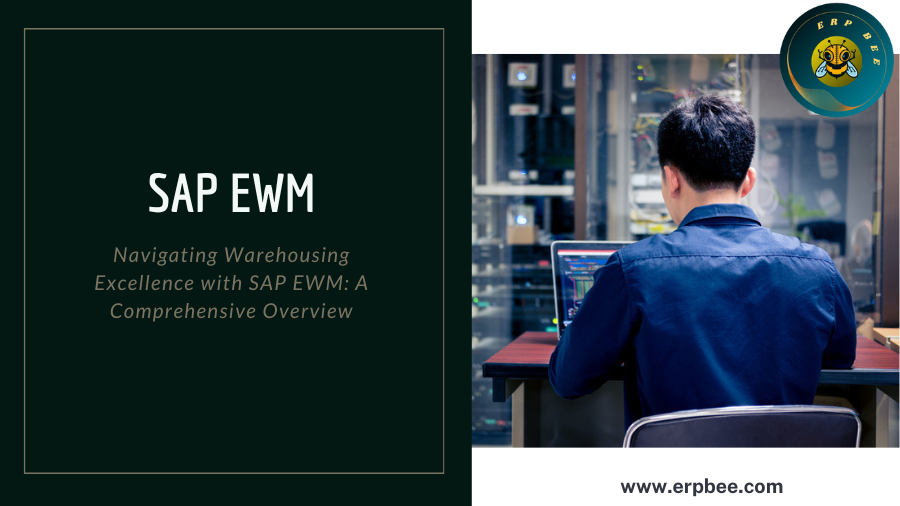In the dynamic landscape of modern business operations, efficient warehousing and distribution are pivotal for success. To streamline these critical processes, companies are turning to advanced solutions such as SAP Extended Warehouse Management (EWM). In this blog, we will delve into the world of SAP EWM, exploring its features, benefits, and the transformative impact it can have on your supply chain management.
Understanding SAP EWM
SAP Extended Warehouse Management (EWM) is a sophisticated software solution designed to optimize and automate warehouse operations, elevating them to new levels of efficiency and responsiveness. As an integral part of the SAP Supply Chain Management suite, EW M offers a comprehensive set of tools and features tailored to meet the unique demands of modern warehousing.
Key Features of SAP EWM
- Warehouse Task Management: EWM enables real-time task allocation, monitoring, and optimization, ensuring that warehouse personnel are directed to the right tasks at the right time. This leads to efficient resource utilization and minimizes operational bottlenecks.
- Advanced Putaway and Picking Strategies: EWM offers a range of putaway and picking strategies based on factors such as product characteristics, demand patterns, and storage capacities. This ensures optimal space utilization and reduces travel time for workers.
- Labor Management: With labor-intensive processes often dominating warehousing, EWM introduces labor management functionalities that track worker performance, measure productivity, and assist in labor planning and allocation.
- Wave Management: EWM's wave management orchestrates the grouping of orders for efficient processing, optimizing picking sequences and minimizing travel distances. This is particularly useful during peak order periods.
- Yard Management: For organizations with extensive outdoor storage or loading areas, EWM's yard management capabilities provide visibility into the status of vehicles and shipments, ensuring smoother inbound and outbound logistics.
- Cross-Docking and Value-Added Services: EWM facilitates cross-docking operations, allowing for quick transfers of goods from receiving to shipping without lengthy storage. Additionally, value-added services like kitting, assembly, and labeling can be seamlessly integrated into warehouse processes.
- Slotting and Replenishment: The software optimizes bin assignments and determines efficient storage locations based on product characteristics and movement patterns. Automated replenishment processes ensure that pick locations are consistently stocked.
- Integration and Connectivity: EWM seamlessly integrates with other SAP solutions, such as SAP Transportation Management (TM) and SAP Global Trade Services (GTS), creating an end-to-end supply chain ecosystem.
Benefits of SAP EWM
- Enhanced Efficiency: SAP EWM's automation and optimization capabilities minimize manual intervention, reducing errors, and boosting overall efficiency in warehouse operations.
- Real-time Visibility: Gain real-time visibility into your warehouse processes, inventory levels, and order status. This empowers better decision-making and enables proactive issue resolution.
- Accurate Inventory Management: EWM's precise inventory tracking and management functionalities help prevent stockouts, overstocking, and discrepancies, ensuring inventory accuracy and reducing carrying costs.
- Improved Customer Satisfaction: Timely and accurate order fulfillment, along with the ability to provide real-time shipment tracking, contributes to improved customer satisfaction and loyalty.
- Scalability: Whether your business experiences seasonal peaks or steady growth, SAP EWM can scale to accommodate changing demands and complexities.
- Compliance and Traceability: For industries with strict regulatory requirements, EWM offers traceability features that facilitate compliance and quality control.
Implementation and Adoption
Successful SAP EWM implementation requires a well-defined strategy and effective change management. Engage with SAP EWM implementation partners who possess the expertise to tailor the solution to your unique business needs. Proper training and user adoption initiatives are crucial for maximizing the benefits of SAP EWM.
Conclusion
As global supply chains continue to evolve, the role of an efficient and agile warehouse cannot be understated. SAP EWM empowers businesses to transform their warehousing operations into strategic assets, enabling them to adapt to market changes, enhance customer satisfaction, and drive overall business growth. By leveraging the advanced capabilities of SAP EWM, organizations can stay ahead of the competition and navigate the complex terrain of modern supply chain management with confidence.
